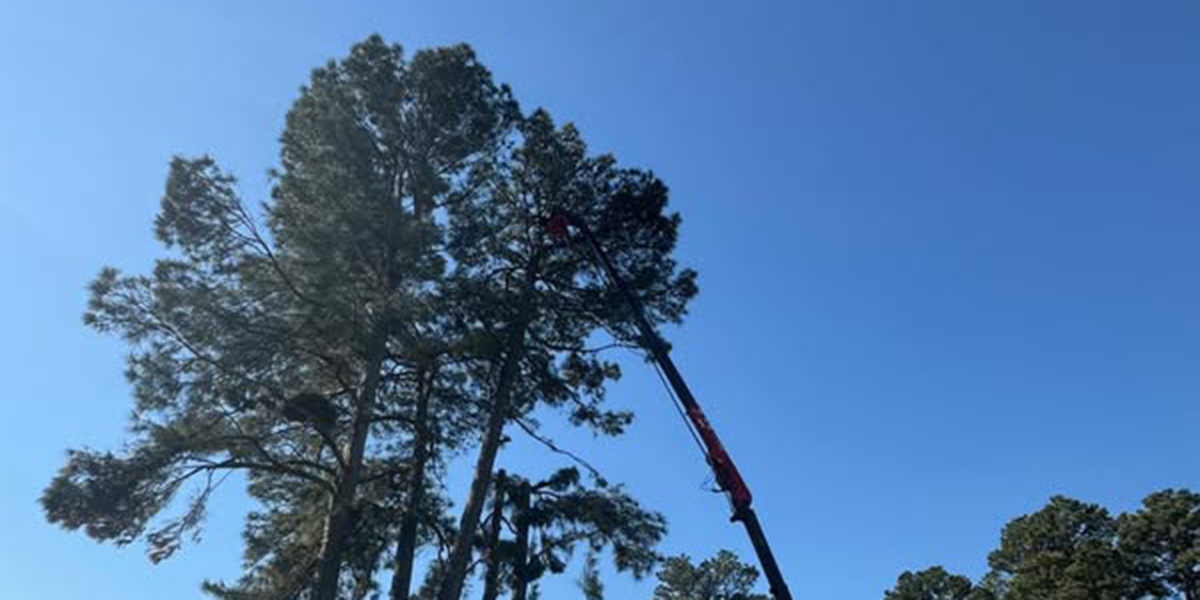Trees are more than just landscaping. They’re long-term investments in shade, beauty, safety, and curb appeal. At Hawkins Tree and Landscaping, we often get asked, “What is the difference between tree trimming and tree pruning?”
As the local leader in professional tree services in Texarkana, Arkansas, we want to help property owners understand the distinction and make informed decisions about their trees’ needs.

Defining Trimming and Pruning: Everyday vs. Expert Care
When talking about tree trimming benefits, think of light, periodic work that keeps a tree tidy and visually pleasing. Trimming cleans up overgrowth, removes branches that intrude on roofs or sidewalks, maintains clearance from power lines, and creates a uniform appearance.
On the other hand, the purpose of tree pruning is more about long-term health, structure, and safety. Pruning is selective: removing diseased limbs, correcting weak branch unions, guiding strong structural growth, opening up the canopy for light and airflow, and reducing the risk of branch failures.
Why Aesthetic vs. Structural Care Matters
Trimming focuses largely on aesthetics. Experts take care to preserve overall appearance and symmetry while keeping everything in bounds. The process involves light thinning, shaping for appearance, maintaining clean lines, and avoiding visual overgrowth. It’s often what people notice first when they pass your property.
Pruning involves structural care that goes deeper. It’s about tree health and maintenance, reducing lasting risks from weak branches and disease, improving the internal architecture of the tree, and ensuring strong limbs.
The benefits of tree trimming include improved curb appeal and more light for lawns and gardens. It’s also less expensive and faster.
The overall purpose of pruning is to protect tree health for a lifetime and enhance structural integrity. The work reduces the risk of limb failure and promotes improved fruit and flower production season after season.
When To Schedule Tree Trimming vs. Tree Pruning
Any cutting of limbs or branches requires careful seasonal tree care practices. In Texarkana’s climate:
- Late winter through very early spring is usually best for most structural pruning, as trees are dormant, disease pressure is lower, and new growth starts after.
- Plan light trimming for late spring or summer when it’s easier to see what needs shaping or what’s interfering with structures.
- Avoid heavy live tissue pruning in autumn, as slower wound sealing plus increased moisture can invite decay.
Certain trees respond differently to cuts. Some need pruning at specific times. For example, arborists trim many fruit trees in late winter and only prune many flowering ornamentals after they bloom.
How To Know What Your Tree Needs
Here are questions your arborist may go over with you:
- Are branches overhanging your roof, brushing your siding, or crossing power lines? That suggests trimming.
- Are there dead, diseased, or weakly attached limbs that could fall or cause damage? That calls for pruning.
- Is your tree young, with poorly defined structure, such as multiple leaders or crowded branches? This is another pruning situation.
- Do you just want to freshen overall appearance, improve sightlines, or prevent obstructed views? That leans toward expert trimming.
Contact Hawkins Tree and Landscaping for Complete Tree Care in Texarkana
Hawkins Tree and Landscaping brings technical skill and local knowledge to every project. We use safe techniques and plan our work around the local climate and seasonal risk factors.
So, what is the difference between tree trimming and tree pruning? Whereas trimming keeps trees neat, clear, and visually appealing, pruning ensures they are safe, structurally sound, and thriving. Now that you’re here, have a look at our post covering the impact of tree trimming on roots.
Whether you need a seasonal trimming or a structural pruning, we’ll handle the work with precision. Call us at (870) 330-9912.

